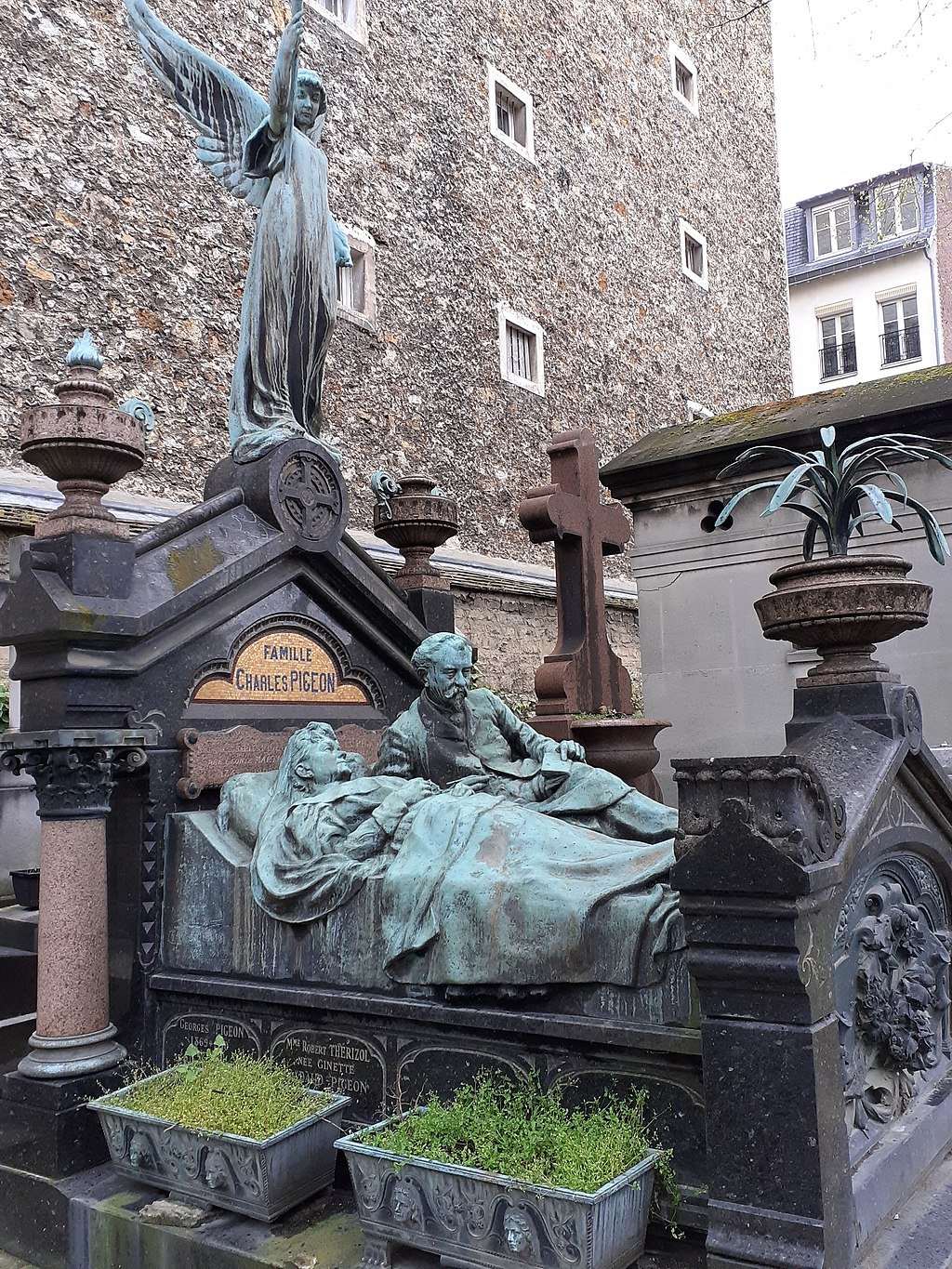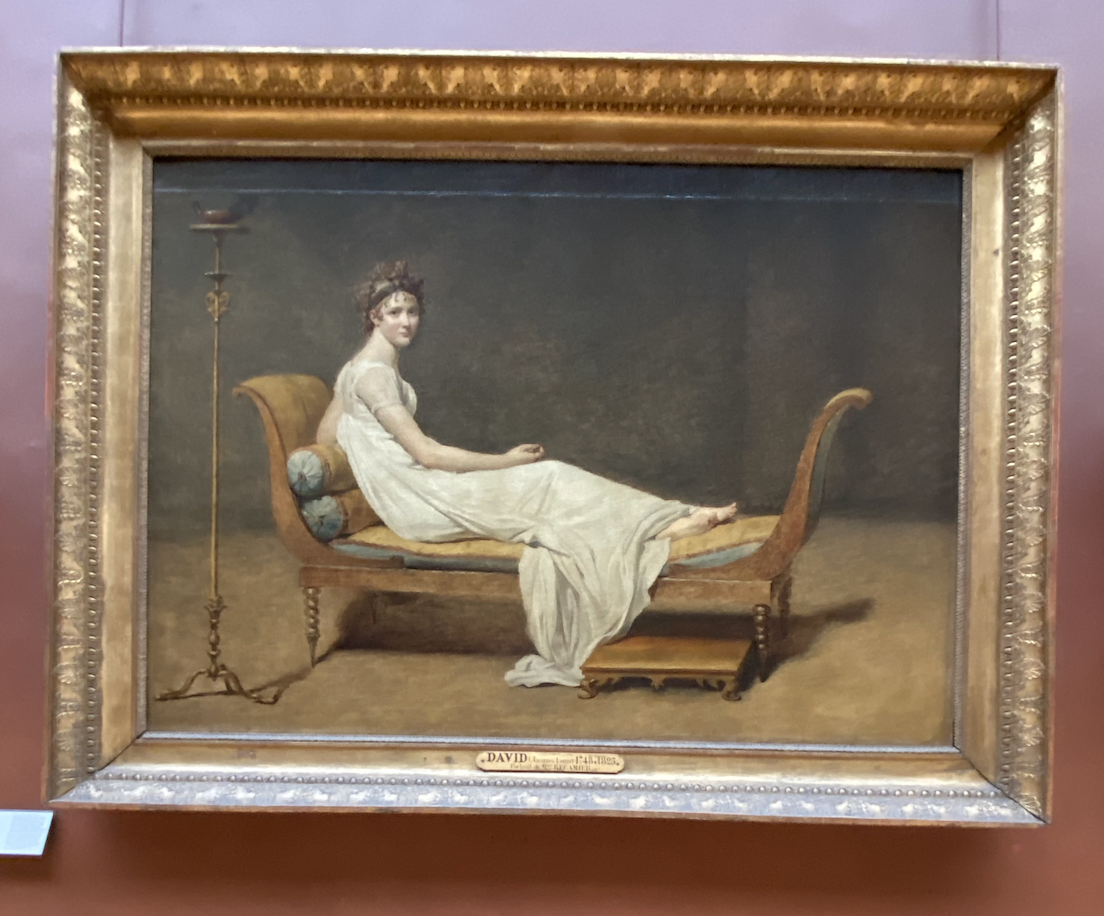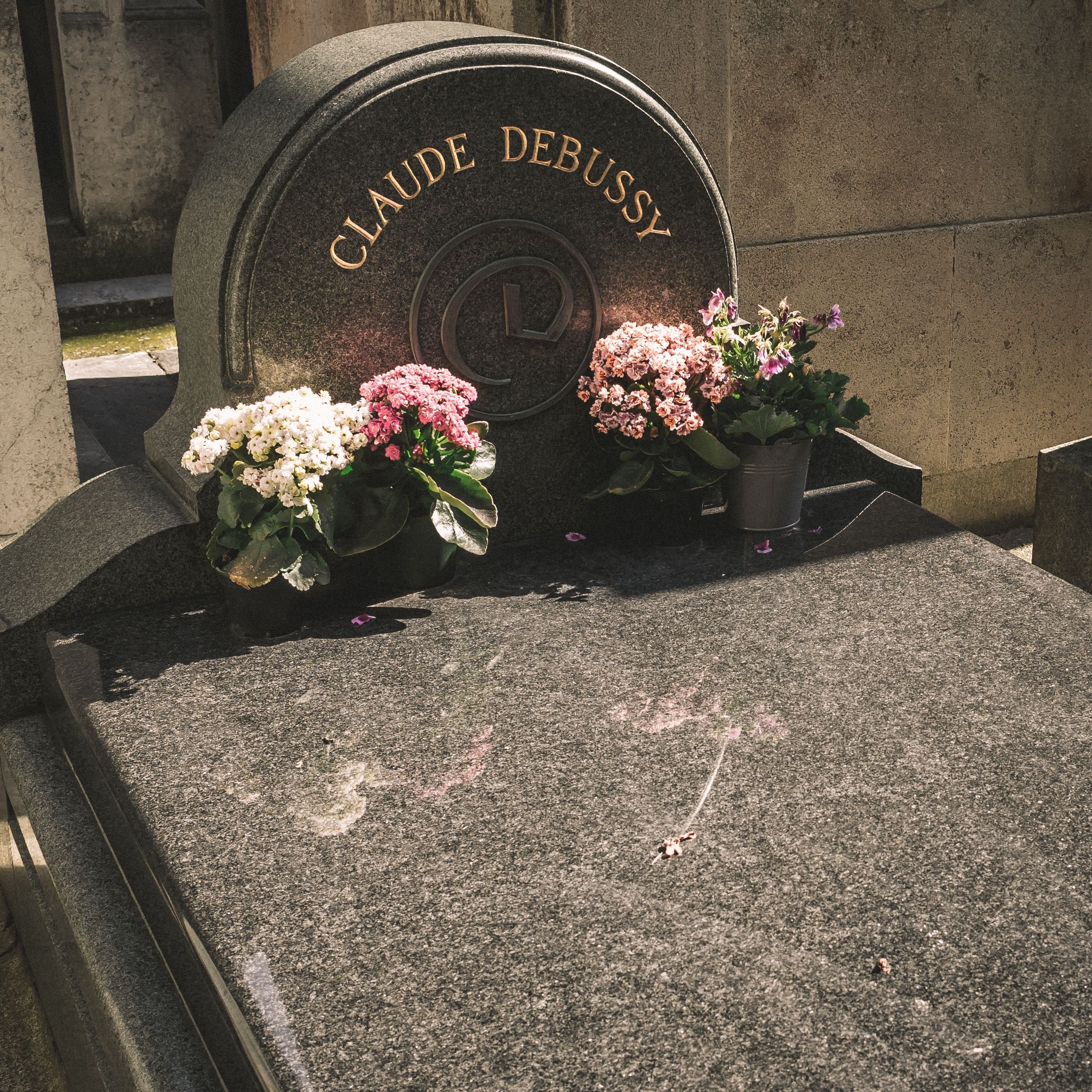On a beautiful fall day, it is one of the best strolls in Paris. Baudelaire, Dreyfus, Man Ray, and the man of Statue of Liberty fame, Frédéric Bartholdi are all buried here. But, one tomb stands out over the many, that of Charles Pigeon. The French inventor started out working at the Bon Marché before he opened his own shop on rue du Cherche-Midi selling lamps. During the late 19th century, lamps would easily catch on fire and he set out to fix that. Inventing the gas lamp, that wouldn’t explode in 1884 brought him fame and fortune. In 1909 his wife would die, and six years later in 1915, Charles himself would pass. After purchasing the plot in 1905, they interred together following his death. Before he died he commissioned French sculptor Caveau to create a bronze monument to grace the top. His wife on her deathbed is clutching a flower, while Charles props himself up on the bed with pen and paper in hand. Is he coming up with a new invention, writing her last words, or pledging his love to her one last time, we will never know. Above their head is an angel watching over them holding up one of the famous Pigeon lamps. Their eternal love is rather sweet, captured in bronze, and tells us a story of a man we would most likely never know or even look into if it wasn’t for the monument he left behind. It is located in the Petit cemetery, in division 22.
Frédéric Auguste Bartholdi, the man known for creating the Statue of Liberty lays to rest within the walls of Montparnasse. Born in Colmar, France he was inspired to create large statues after a visit to Egypt. He first created a statue of a woman holding a flame for the construction of the Suez Canal, but the commission was turned down. Does it sound familiar? Two years later he redesigned it and proposed that it be a gift from France to America. Today you can find 7 versions of the statue in Paris. His tomb is topped with a bronze flying angel that he created himself. In division 28 of the Petit cemetery.
Keep your eye out and you may find a small Statue of Liberty on this next tomb. Cèsar Baldaccini was a French sculptor who used leftover and discarded metal to create large-scale pieces. His name was given to the French Oscars, the Cèsar Awards after he created the award itself. Although, you may know his work best at the corner of Rue du Cherche-Mid, steps away from the wonderful Poilâne bakery. Before he died he created a smaller version that can be found on his tomb. Grand cemetery, division 3.
Charles Baudelaire, the French author had an opinion on everything and everyone back in his day. Quite the dandy around town, he was known in just about every group of Paris. In 1857 he wrote Les Fleurs de Mal, a collection of short essays many with racy themes, so of course it became one of his best-known pieces. Baudelaire also lived in just about every neighborhood in Paris, relying at times on the help of friends. He died on August 31. 1867 at 46 years old. He was laid to rest in the tomb of his parents, but one grave wasn’t good enough. Later his fans didn’t think his grave was fit for the great writer and had another monument created. The L-shaped grave is topped with a bust of a thinking man as he looks out and over the mummified body below. The family grave is in Division 5 and the cenotaph is on the back wall of divisions 26 and 27, both in the Grand cemetery. (the Petit also has divisions 26 & 27 to make it more confusing)
Montmartre
After the Cimetière des Innocents was closed in 1780 and the remains mostly used to fill the Catacombs, the Parisians were looking for a new place to bury their loved ones. In the next few weeks in honor of spooky Halloween, I will share with you some of my favorites from the big three cemeteries of Paris. A few of the famous residents and a few you may not even know.
On January 1, 1825, the Cimetière des Grandes Carrières also known as the Cimetière du Nord officially opened. During the Revolution, the old gypsum quarry was a mass grave at the base of Montmartre. Spreading out over 28 acres the Cimetière Montmartre is as much a part of the neighborhood as the historic Moulin Rouge.
One of the biggest names in the cemetery is of course Dalida. The Italian-Egyptian singer moved to Paris and became an international star. Sadly her life was filled with tragedy including her very own ending. On May 2, 1987, she overdosed on barbiturates, washing it down with whiskey and leaving behind a note saying, “Life is unbearable to me, excuse me”. She was just 54 years old. Her tomb is hard to miss and fitting for the Egyptian beauty. Created by Alain Aslan who also did the bust of her in Montmartre at Place Dalida. The full-size statue stands in front of a marble wall with a golden sun behind her head. For more Dalida check out our podcast episode about her. You can’t miss her in division 18.
The beautiful Juliette Récamier, whose Salons in Paris were the place to be. Widely recognized for her unfinished portrait by Jacques-Louis David laying on what would later be named a Récamier. Married to what may have been her father, it’s an interesting story coming up in November on the podcast. In Paris, their home, decorated in Etruscan style, was one of the first in Paris. Juliette was a constant trendsetter who caught the attention of everyone including Napoleon. Pushing off his advances, she later left Paris before he could exile her, returning after he was out of power. Dying on May 11, 1849, at 71 years old and forever remembered hanging on the walls of the Louvre. Her rather plain marker for such a beautiful woman is in division 30.
Edgar Degas, the great Impressionist painter, who didn’t like to be called one, lay near the eastern wall in Division 4. The first thing you notice is the name. The family plot is marked with his birth name, De Gas. The artist known for his paintings of ballet dancers, lived most of his life in Montmartre taking artists under his wings including Suzanne Valadon and Mary Cassatt.
Jacques Offenbach, a musical theater composer, may be best known for one of his most famous pieces, the Can Can. Coming to Paris at 14 years old from Germany he attended the Paris Conservatoire for a year before he decided he didn’t need it. As a trained cellist he toured Europe but always had his eye on the stage but was constantly denied entry into the Paris stage scene. He built his own company in Les Bouffes-Parisiennes near the Opera and found some of the prettiest ladies in Paris to take his stage. Valtese de la Bigne, long before she became the biggest courtesan in Paris, once graced his stage and also his bedroom. A pretty nasty episode happened when his wife found out. Can’t wait to release our episode about Valtese. Offenbach died in 1880 of heart failure and was laid to rest in this tomb topped with a bust by Jules Franceschi in division 9.
Chef Marie-Antoine Carème, the French father of Haute Cuisine, began as a pastry chef. He opened Pâtisserie de la rue de la Paix after training under Sylvain Bailly and would display pasties that defied gravity and would wow everyone who walked by. Working for Charles Maurice de Talleyrand-Périgord he was asked to create menus using only seasonal ingredients for an entire year. His career took him from Paris to London and Russia. Returning to Paris, he died at 48 and entered here at Montmartre. Stop by and leave a pastry for the great chef.
Théodore Chassériau, a French romantic painter heavenly influenced by Eugene Delacroix died far too early at 37 years old. In that short time he created beautiful paintings of his family and Oriental themes hanging in the Musée du Louvre, a room away from his idol Delacroix.
You will also come across a large tomb dedicated to Émile Zola in division 19. Topped with a bust of the writer with some pretty fantastic hair, he looks over his family that lay at rest in the red marble tomb. Zola himself was moved to the Pantheon in 1908. A friend and supporter of Manet, but best known for his involvement in the Dreyfus affair causing him to flee France for a time. Zola died on September 29, 1902, from carbon monoxide poisoning. Thought to be an accident, later a roofer confessed in the final moments of his life that he shoved linens into his chimney for his political views.
Passy
Sitting in the shadows of the Eiffel Tower it may be the best view for a final resting place for some of the greats in French history. As the smaller of the big cemeteries it’s a bit easier to tackle and two of my favorites can be found here.
Edouard Manet first exhibited at the Salon of 1859 with the Absinthe Drinker. Died on April 30, 1883, of Syphilis he got at a Rio Carnival as a teenager. Which later caused him to lose part of his leg. Buried alongside is his wife Suzane Leenhoff, brother Eugene Manet, and artist Berthe Morisot.
Morisot and Manet met within the walls of the Musée du Louvre as a copyist. With her dark looks that resembled the Spanish models of Goya and Velazagez, he knew he had to paint her immediately. The subject of 10 paintings she also gleaned all she could from Manet and became the most successful of all the female impressionists.
Claude Achille Debussy born August 22, 1862 in Saint Geramin-en-Laye. At 10 years old he was admitted to the Paris Conservatoire after his talents were recognized by Mme Maute.
The cemetery also holds a few French aviators. Henry Farman became the first man to fly a heavy than air, aircraft to New York City in 1908. He also designed the first aircraft for passengers before his death on 17 July 1958.
Maurice Bellone made the first east-west crossing of the North Atlantic in 1930.
Emanuel de Las Cases born in 1766 was a historian and friend of Napoleon who was with the Emperor during his exile on Saint Helena. He later published Mémorial de Saint-Hélène about his observations of Napoleon. Las Caes died in 1842, 21 years after Napoleon.










